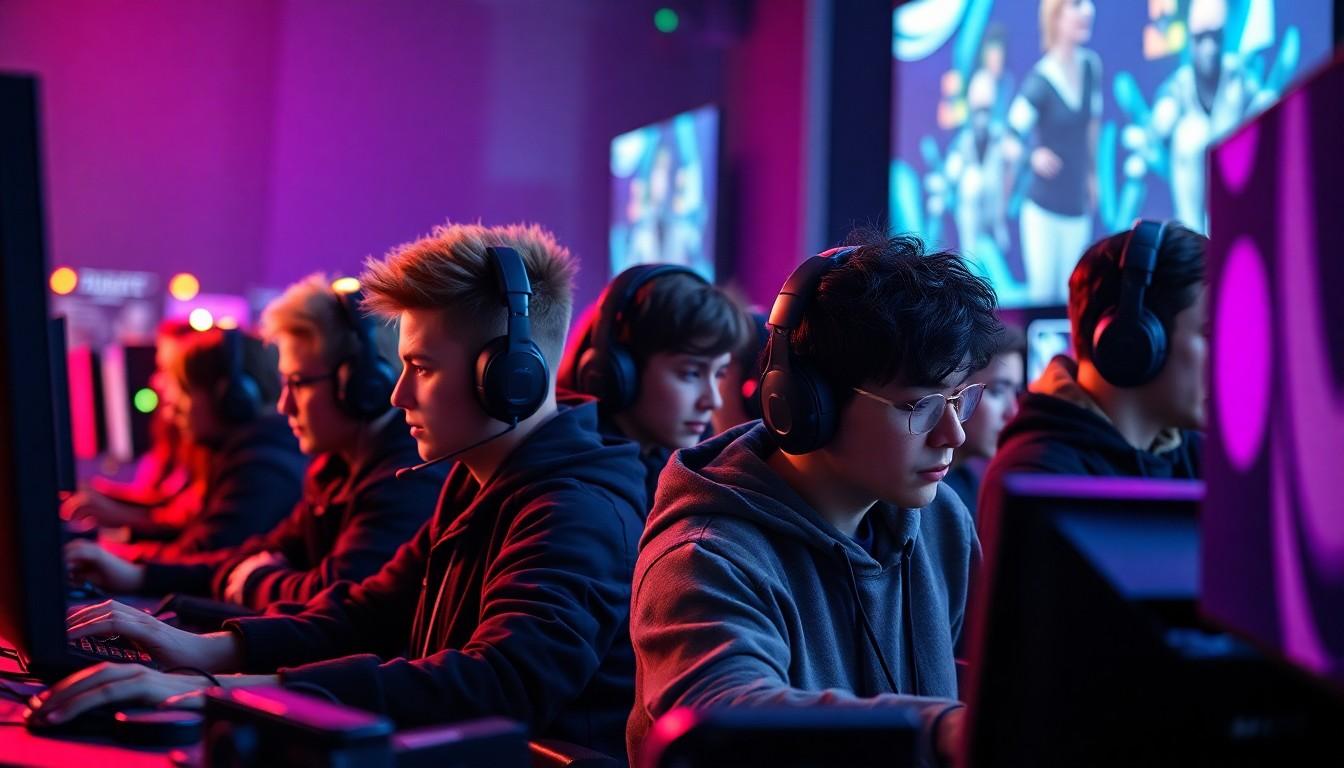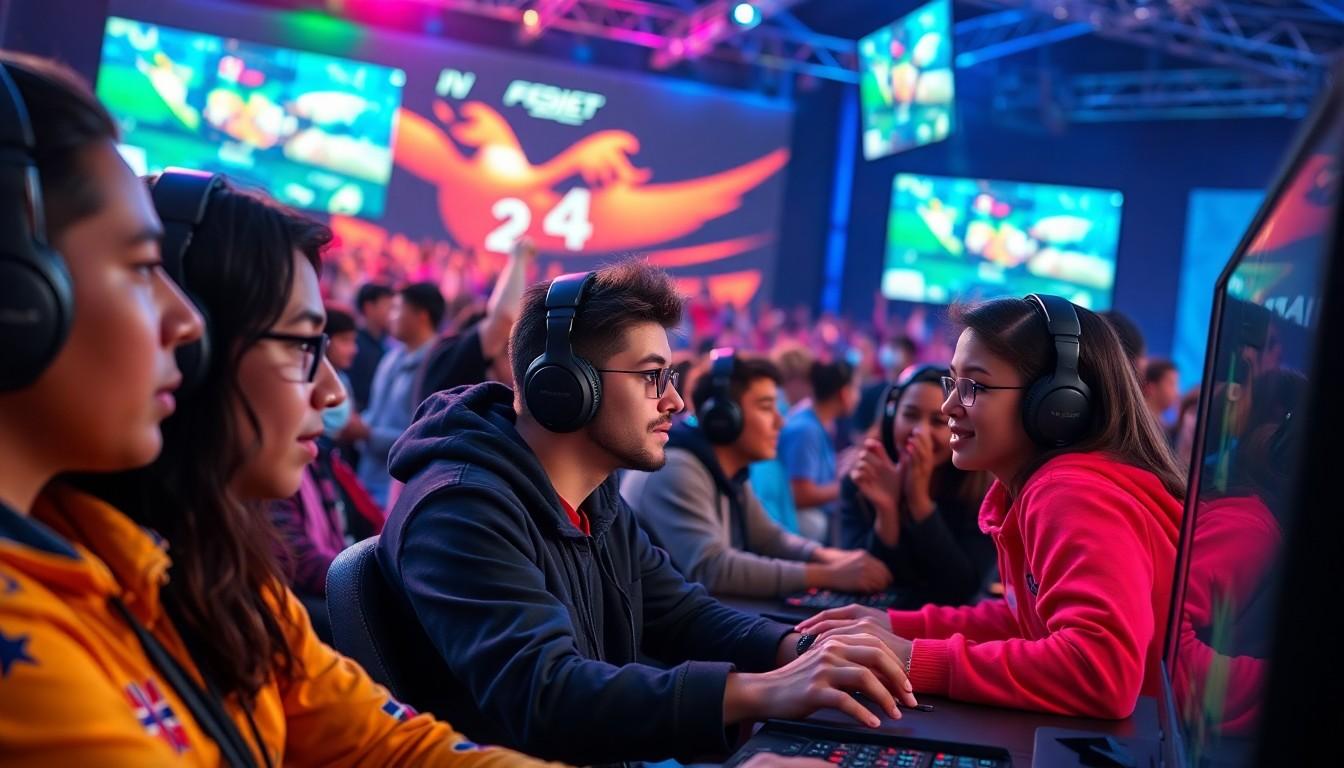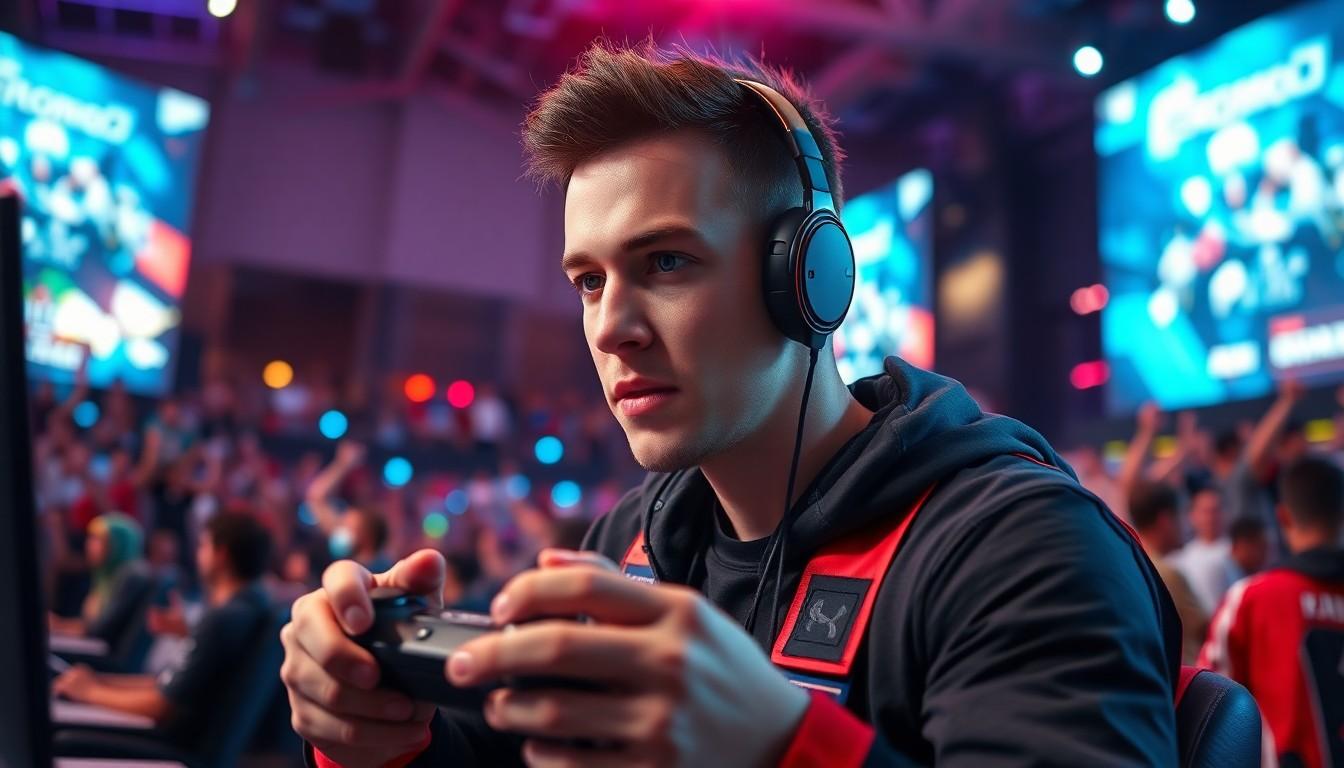Competitive gaming isn’t just a pastime; it’s a full-blown phenomenon that’s taken the world by storm. Gamers are no longer just sitting in their basements; they’re battling it out on grand stages with millions watching. From epic tournaments to intense rivalries, the thrill of competition offers a rush that keeps players hooked and fans cheering for more.
Competitive Gaming
Competitive gaming has transformed into a dynamic industry, attracting millions of players and fans worldwide. This phenomenon includes various genres, such as first-person shooters, real-time strategy games, and multiplayer online battle arenas. Events often feature large cash prizes, sponsorships, and significant media coverage, enhancing their allure.
Tournaments gather thousands of participants, showcasing skills and strategies. Major competitions, like The International for Dota 2 or the League of Legends World Championship, attract massive audiences, both online and offline. Live events often see stadiums filled with enthusiastic fans, echoing cheers and shouts during crucial moments.
Talented players develop a reputation as esports athletes, with some even achieving celebrity status. Teams form around these players, representing organizations that promote their interests and provide resources. Training regimens and practice schedules often parallel traditional sports, with an emphasis on teamwork, communication, and mental fortitude.
Broadcasting platforms like Twitch and YouTube Gaming facilitate the sharing of competitive gaming experiences. Viewers engage with live streams, offering real-time commentary and interacting with players. This engagement turns casual viewers into dedicated fans, creating vibrant communities around each title.
Sponsorship plays a crucial role in the growth of competitive gaming. Companies seek partnerships to reach specific demographics, investing in teams and events. This financial backing not only fuels tournament production but also supports players and their aspirations to excel in an increasingly competitive landscape.
The competitive gaming scene is continuously evolving, with advancements in technology and changes in player expectations. As esports gains recognition in mainstream culture, it faces both challenges and opportunities, paving the way for future growth in the industry.
The Evolution of Competitive Gaming

Competitive gaming has undergone remarkable transformations, from humble beginnings to a global spectacle. This dynamic landscape reflects the growing interest and participation in esports.
Historical Milestones
In the early 1970s, arcade games like Space Invaders paved the way for competition. Tournaments began emerging during the 1980s, with titles such as Space Invaders and Street Fighter attracting players. The 1990s marked the rise of LAN parties, fostering local competition and community. The first multiplayer online battle arena games took shape in the early 2000s, paving the way for massive tournaments. Major milestones include the first televised esports tournament, the 2000 Cyberathlete Professional League, which showcased competitive gaming on a new platform. Noteworthy events like The International for Dota 2 and the League of Legends World Championship propelled competitive gaming into the mainstream, capturing the attention of millions worldwide.
Technological Advancements
Advancements in technology have significantly impacted competitive gaming. High-speed internet connections allowed players to compete globally in real-time, eliminating geographical barriers. Streaming platforms revolutionized how audiences engaged with competitions; platforms like Twitch and YouTube Gaming enabled live broadcasts and interactive chat features. Game developers optimized titles for competitive play, ensuring balance and fairness, thus enhancing the overall experience. Virtual reality and augmented reality technologies continue to evolve competitive gaming, offering immersive experiences. Accordingly, the continued improvement in hardware, including gaming consoles and PCs, provides players with tools to perform at their best, pushing the boundaries of competitive potential.

Types of Competitive Games
Competitive gaming encompasses various types, each offering unique experiences and challenges. Understanding these types helps players navigate the landscape effectively.
Esports Titles
Esports titles dominate the competitive gaming scene. Games like Dota 2, League of Legends, and Counter-Strike: Global Offensive attract millions of players and viewers. Players engage in organized tournaments that often lead to significant cash prizes. These games require skill, strategy, and team coordination, making them appealing to both participants and spectators. The rise of esports has also led to increased mainstream recognition, with major events broadcast globally. Players often train rigorously to refine their talents, contributing to the titles’ intense competitive atmosphere.
Casual Competitive Formats
Casual competitive formats offer an approachable way for gamers to experience competition. Titles like Rocket League and Mario Kart provide accessible gameplay, allowing players of all skill levels to participate. These games often feature shorter match durations, encouraging players to compete more frequently. Community tournaments and leagues create lively environments that foster camaraderie among participants. Players enjoy the thrill of competition without the high-pressure stakes of professional esports. Engaging in these casual formats often leads to the development of skills that can be applied in more serious competitive settings.
The Competitive Gaming Community
Competitive gaming unites players and fans in vibrant communities worldwide. This camaraderie enhances the overall experience, drawing in diverse groups with shared interests.
Player Demographics
Competitive gaming attracts a broad age range. Participants often include individuals from their early teens to their thirties. Data indicates that about 70% of gamers fall within the 18 to 34 age bracket. Furthermore, the community showcases increasing gender diversity, with female players representing nearly 30% of the competitive scene. Geographic representation spans across continents with strong participation from North America, Europe, and Asia. This diverse demographic fosters varying playstyles and preferences, contributing to the rich tapestry of competitive gaming.
Online vs. Offline Events
Online events serve as accessible venues for competitors globally. They allow players to participate without geographic constraints. By contrast, offline events create electrifying atmospheres, bringing fans and players together in stadiums. Major tournaments like The International and the League of Legends World Championship often draw thousands to live venues. These in-person experiences enhance community connections and immersion. Additionally, online competitions enable continuous interaction through streaming platforms, allowing fans to engage in real-time. Both formats play crucial roles in nurturing the competitive gaming landscape.
Impact of Competitive Gaming
Competitive gaming drives significant change in various sectors. Many industries experience economic benefits from its growth and popularity.
Economic Growth
Esports contributes billions to the global economy. In 2022, revenue from esports reached over $1.4 billion, indicating a substantial market expansion. Sponsorship deals and advertising revenues support this growth, with brands eager to tap into the audience. More jobs emerge in areas such as event management, marketing, and content creation, enhancing local economies. Major tournaments generate revenue through ticket sales, merchandise, and broadcasting rights. This financial influx strengthens economies at both local and global levels.
Cultural Influence
Competitive gaming impacts culture widely, influencing entertainment and social interactions. As esports gains recognition, mainstream media showcases tournaments, attracting more viewers. Collaborative efforts between game developers and content creators foster unique experiences, enhancing player engagement. Streaming platforms, like Twitch, build communities around games, allowing fans to interact with players. Cultural events highlight diversity within gaming, with inclusivity becoming a key focus. Moreover, competitive gaming shapes youth culture, as it resonates with younger generations who embrace digital interactions.
Bright Future in Esports
Competitive gaming has transformed into a vibrant global phenomenon that captivates millions. With its dynamic tournaments and skilled players, it’s reshaping the landscape of entertainment and community engagement. The blend of technology and talent continues to push boundaries, creating new opportunities for both players and fans.
As the industry grows, it’s clear that competitive gaming is here to stay. The excitement of live events and the accessibility of online competitions foster a sense of belonging among diverse audiences. This evolution not only highlights gaming’s cultural significance but also emphasizes its economic impact, paving the way for a bright future in esports.

